P-40s
of the
73rd Fighter Squadron
on Midway Atoll
In late June of 1942 reinforcements were sent to Midway in the form of 18 USMC SBDs and 25
P-40s of the 73rd Fighter Squadron, all of which were ferried from Hawaii by USS Saratoga (CV-3)
and flown off the carrier, landing at Henderson Field on June 25th, 1942. The 73rd FS was at the
time attached to the 18th Fighter Group and had previously been based at Bellows Field, Hawaii.
While still at Midway, in October of 1942, the 73rd was transferred to the 318th Fighter Group.
The outfit remained at Midway until January of 1943 when it was sent back to Hawaii to rejoin
the territorial air defenses before converting to the P-47 and deploying to Saipan later that year.
Two P-40Es of the 73rd Fighter Squadron aboard USS Saratoga at Pearl Harbor in late
June of 1942. The Hawk to the right is named 'Flagship Mary Ann' and bears the number
100 on her fin. Both ships carry national insignia in both upper wing positions (and likely
both lower, as well) in accordance with US Navy practice in the Pacific theater at that time.
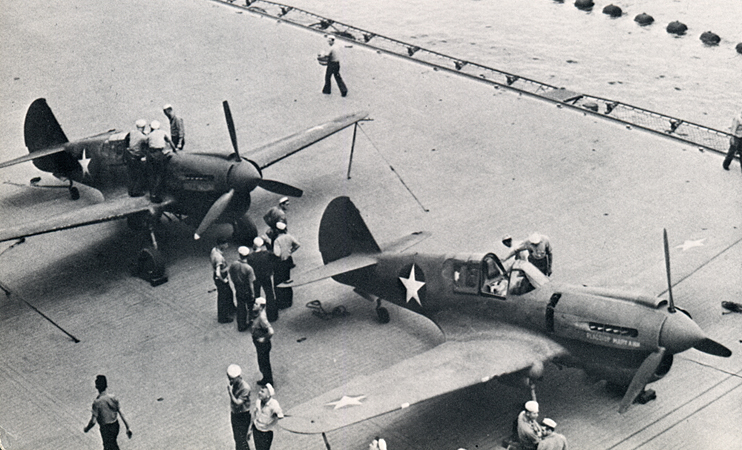
From: Air Force Colors Vol.1 1926-1942 by Dana Bell -
Larger Image
Book credit line: NARS via Cressman
'Flagship Mary Ann' about to launch from Saratoga, June 25th, 1942. The overpainted
red center of the national insignia on the fuselage is clearly evident here, and there is a
simple but rather interesting design painted on the starboard main wheel cover.
In both this photo and that above, it appears that each of these Hawks has no guns
installed, and that the ports have been taped over and/or otherwise covered. This is shown
quite clearly in another photo below, which was taken at Midway in November of 1942.
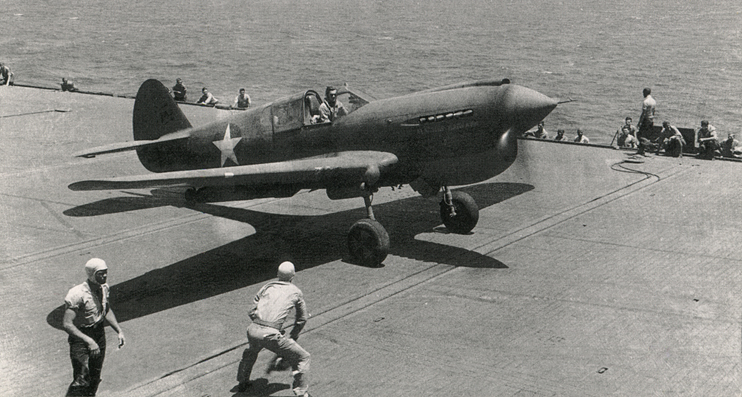
From: P-40 Warhawk in Action No.205 by Richard S. Dann -
Larger Image
Book credit line: NHC (Naval Historical Center)
Pilots of the 73rd FS with one of their P-40Es on Midway, late 1942. As mentioned above, the
national insignia was applied to all four wing positions before reaching Midway, and probably
rather hurriedly, if the reversed star underneath the port wing is any indication. This photo
was taken after the squadron had been transferred to the 318th Fighter Group in mid-October.
The pilots are identified by 'SaipanTBolt' as:
Front row, left to right: Fitzsimmons, Brosamle, McGinn, Birk, Long, Williams, Teschner,
Laughlin, Dunn, and Munden. Back row, left to right: Hussey, Vogt, Anthony, Mitchell, Tennant,
Doar, Restiff, Streete, McCown, Evans, Silver, unknown, Summerside, O'Hare, Nelson, Taylor.
'Evans', seventh from the right, back row, is the 73rd FS CO, Major John Evans.
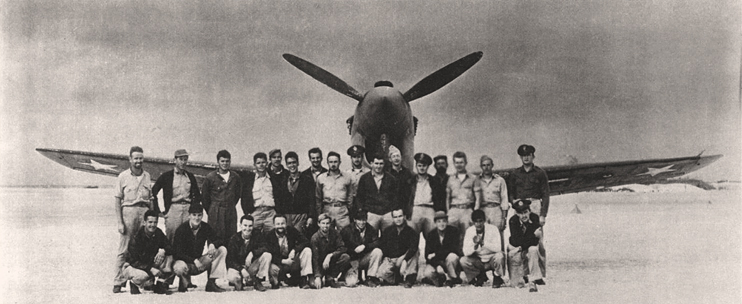
Posted on Flickr by 'SaipanTBolt' -
Larger Image
When brothers Frank and Joe Scherschel arrived at Midway in November of 1942 to
document the US military's presence there on film for LIFE Magazine, it seems they
turned their cameras mostly toward the Douglas SBD Dauntlesses of the resident USMC
scout-bombing squadron, VMSB-241. But they also captured a few shots showing the
P-40Es of the USAAF's 73rd Fighter Squadron. Here are some of those few photos.
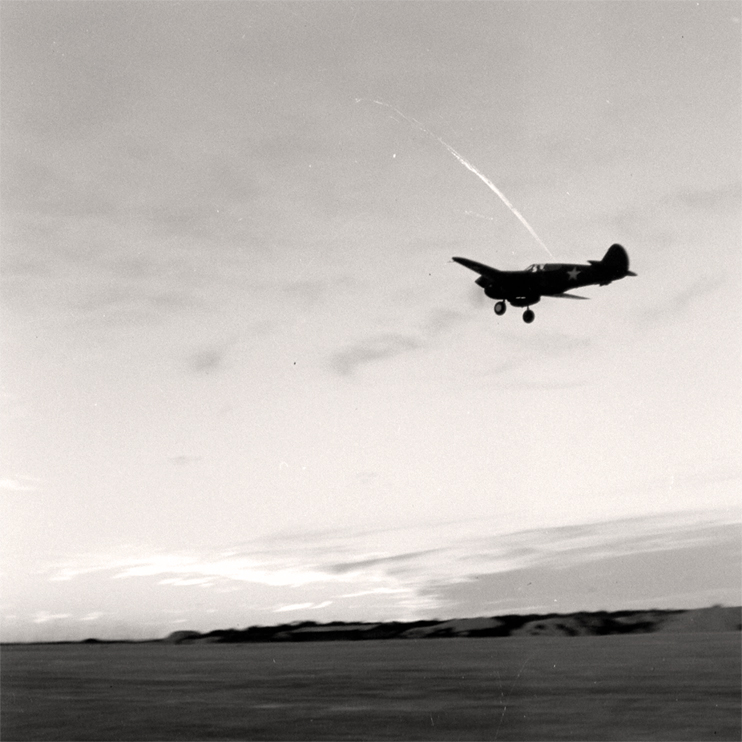
LIFE Photo Archives via Google Arts & Culture (Joe Scherschel photo) -
Larger Image
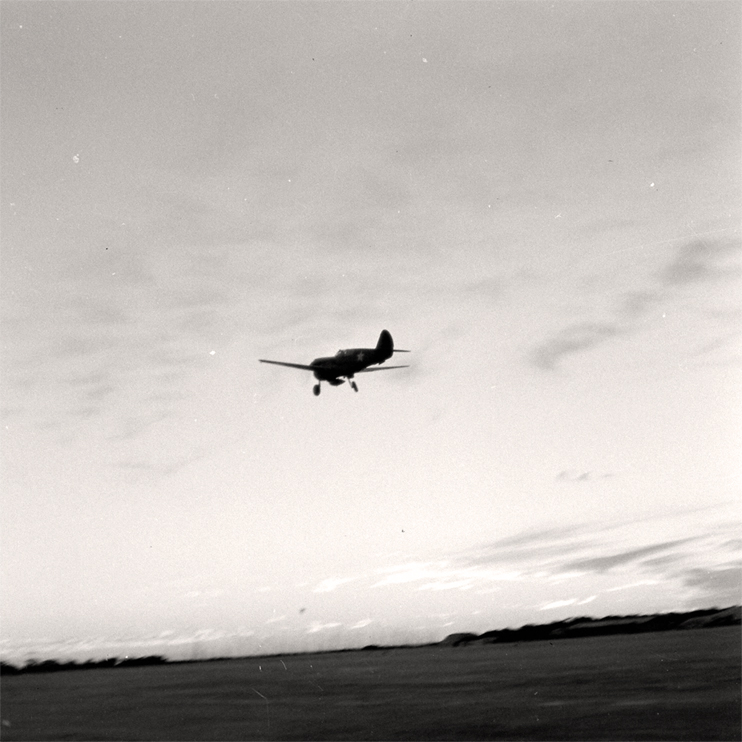
LIFE Photo Archives via Google Arts & Culture (Joe Scherschel photo) -
Larger Image
Wartime duty on a Pacific island in 1942 was undoubtedly not quite as cushy as some
seem to think, but it was certainly not without its simple pleasures...
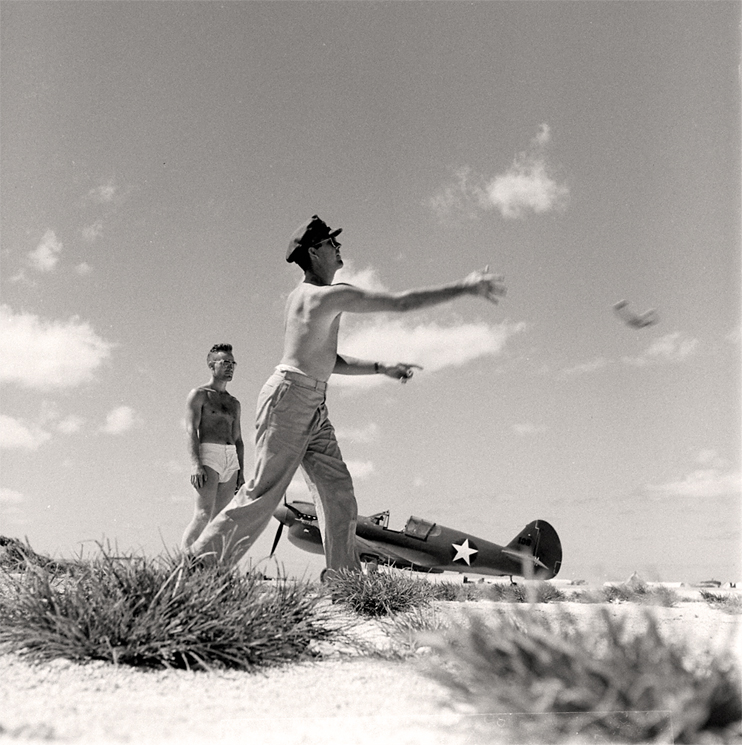
LIFE Photo Archives via Google Arts & Culture (Joe Scherschel photo) -
Larger Image
Of interest in this crop of the above photo is a name on the nose that appears to
begin with 'Rita', and a white spot below the name. More on this 'white spot' below.
Also, all photos I have seen of 73rd FS P-40s at or enroute to Midway have in
one way or another given me the impression that these Hawks carried non-standard
paintjobs; something that is strongly reinforced by this particular photo.
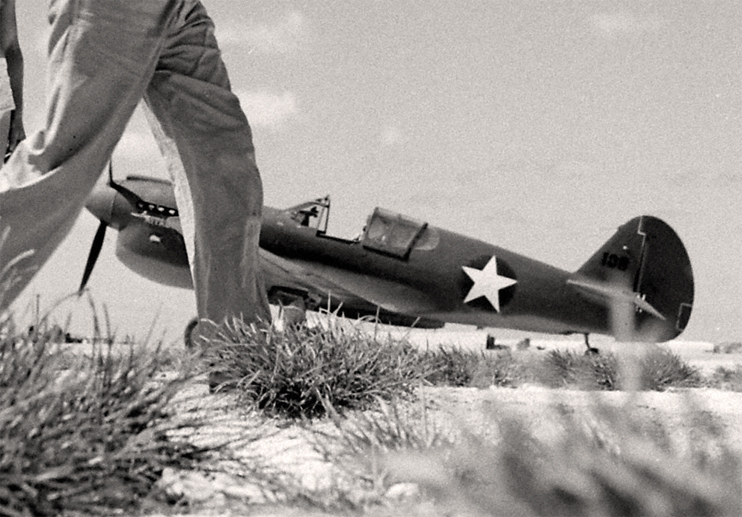
LIFE Photo Archives via Google Arts & Culture (Joe Scherschel photo) -
Larger Image
As mentioned above, the Hawks shown aboard Saratoga appear to carry no guns. Same here.
Another possibility is that the guns were indeed installed, but the blast tubes were not,
and the openings were simply taped over to prevent sand and dust contamination.
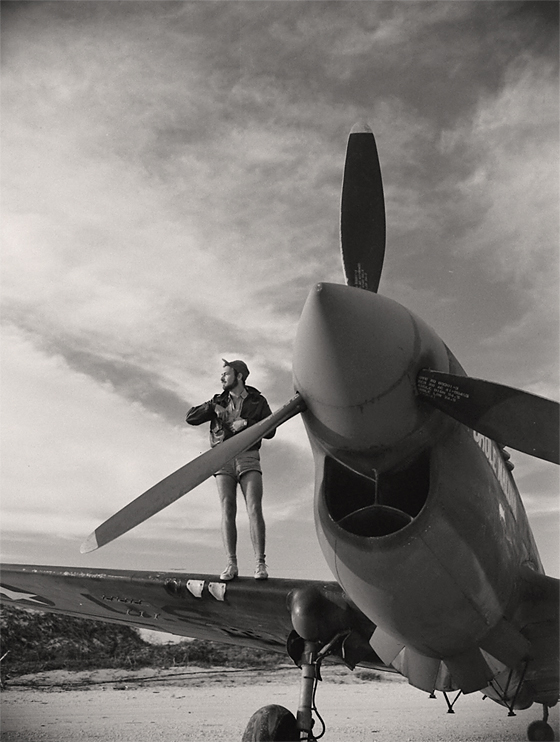
LIFE Photo Archives via Google Arts & Culture (Joe Scherschel photo) -
Larger Image
A closer look...
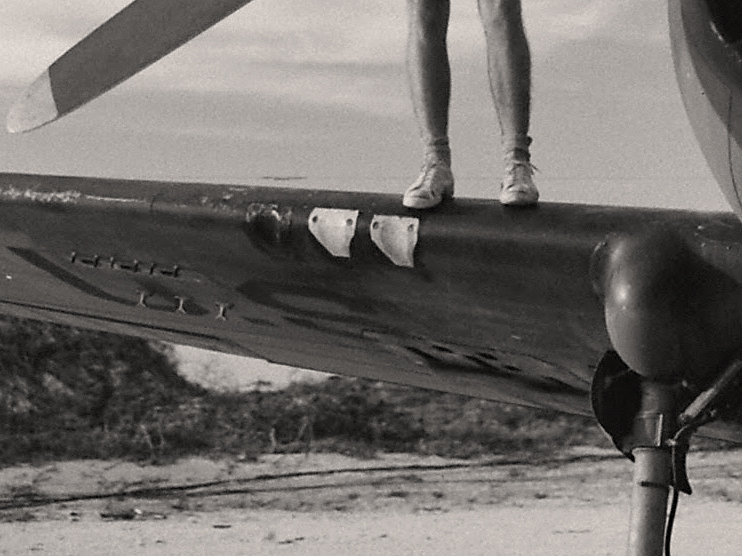
LIFE Photo Archives via Google Arts & Culture (Joe Scherschel photo)
'Shirley Mae' and her pilot, captured during an idyllic Pacific sunset.
This photo shows that this Hawk carries the same 'white spot' as 'Rita', and
further reveals that the 'spot' is actually what looks to be a charging bull. I've not
done much digging on the 73rd FS and so am not sure of the significance of this
marking. Possibly an early and unofficial squadron emblem or flight marking?
Also of note here is the degrading overpainting of the fuselage insignia's red center.
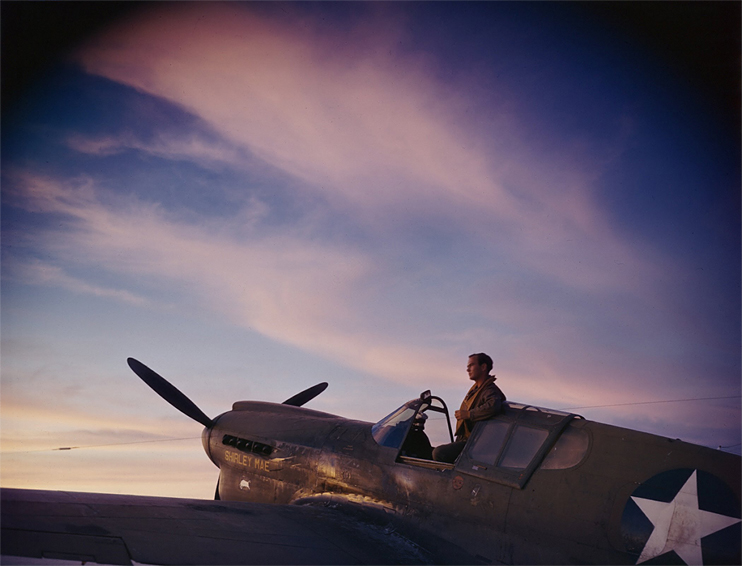
LIFE Photo Archives via Google Arts & Culture (Frank Scherschel photo) -
Larger Image
A closer look at the nose and the charging bull...
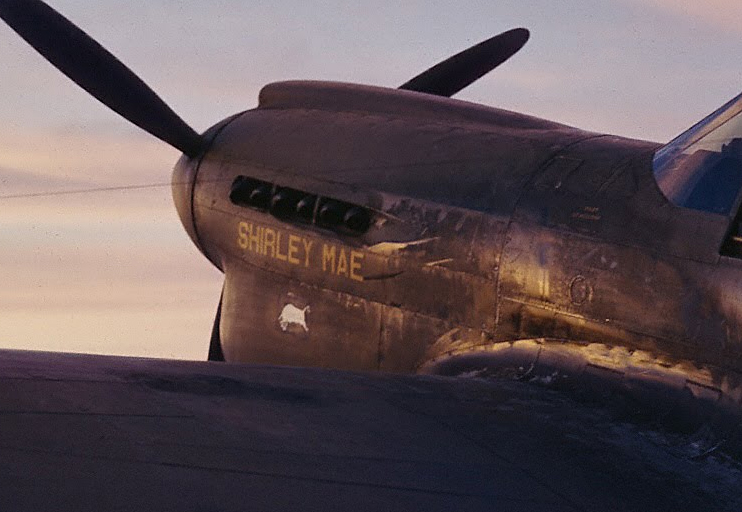
LIFE Photo Archives via Google Arts & Culture (Frank Scherschel photo)
This last photo shows that the bull was carried on both sides of 'Shirley Mae's nose.
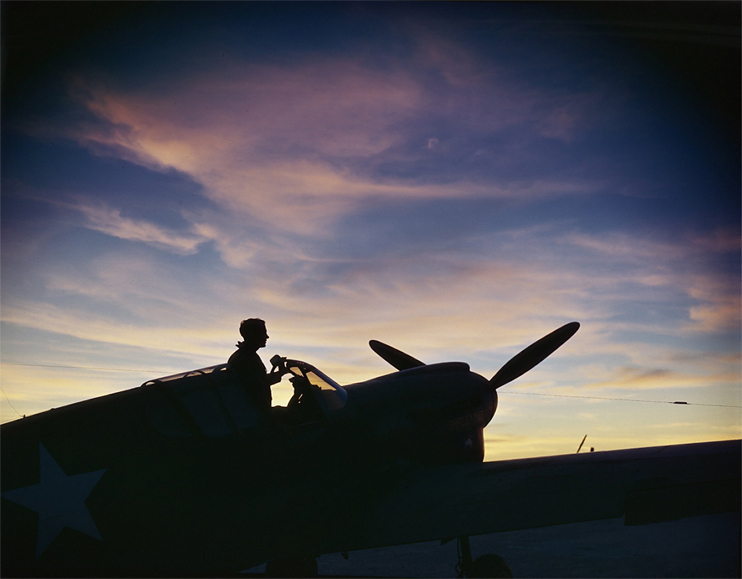
LIFE Photo Archives via Google Arts & Culture (Frank Scherschel photo) -
Larger Image
Back to 'USAAF'










